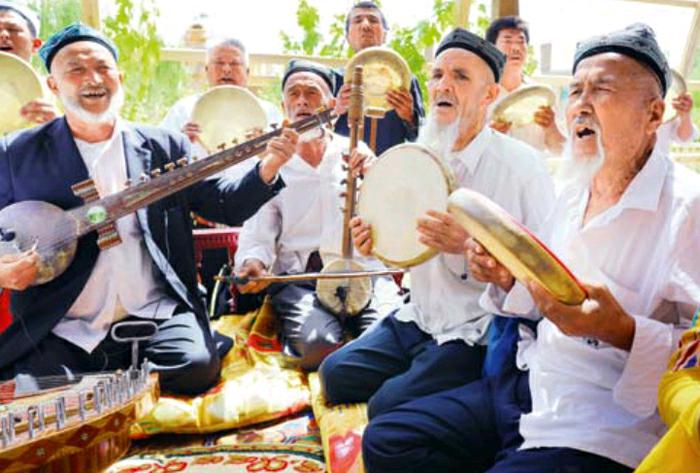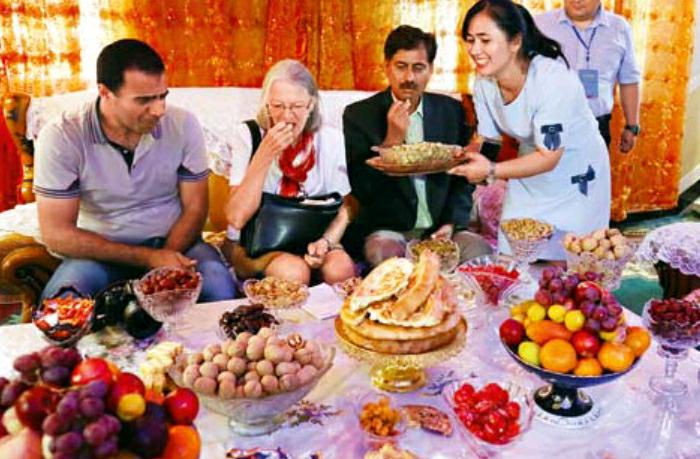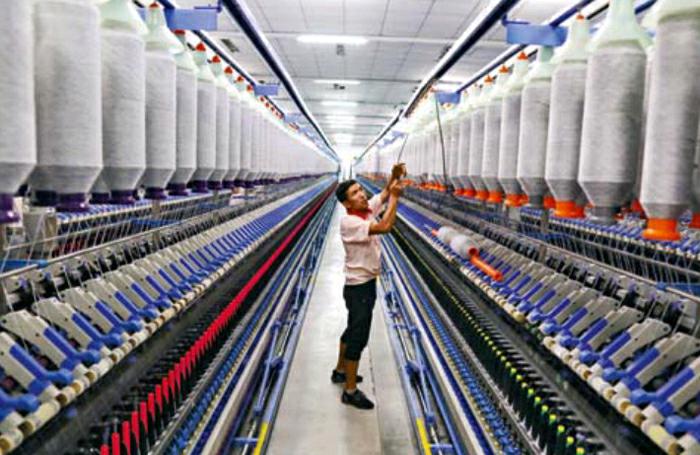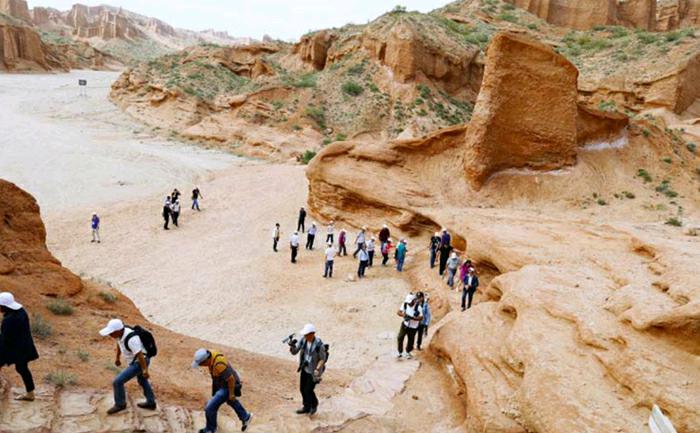Aksu on the Silk Road
2017-09-06byZhuXingxin
by+Zhu+Xingxin
The successful Belt and Road Forum for International Cooperation, held in Beijing in May 2017, has created great opportunities for the development of the Xinjiang Uygur Autonomous Region located at the core area of the Silk Road Economic Belt. From May 15 to 18, Aksu, an important hub along the ancient Silk Road, welcomed journalists from both Chinese and international media organizations who came for a news reporting campaign themed “Approaching the Core Areas of the Silk Road Economic Belt.”
Located at the southern foot of Mt. Tianshan in Xinjiang, Aksu is an ancient city that was bustling as early as two millennia ago as a stop for caravans and travelers along the ancient Silk Road. It is also an important historical location as the destination of Zhang Qian, an envoy of the Han Dynasty (202 B.C.-A.D. 220) who was dispatched by Emperor Wudi to the Western Regions on missions of peace and friendship, and a rest stop for Xuanzang, an eminent monk of the Tang Dynasty (618-907), who endured untold sufferings on a pilgrimage to India seeking Buddhist scriptures.
Thanks to its geographical advantage, the city has long hours of sunlight in summers and wide-ranging temperatures that give Aksu especially-luscious fruits such as grapes, dates, and Hami melons, which are sold well globally.
Centuries ago, Aksu was a hub for the small kingdoms of Qiuci and Gumo in the Western Regions as well as the first stop for Buddhist culture from India moving towards central China. The place is where Eastern and Western cultures clashed to give birth to world-renowned Qiuci and Dolan cultures. In 2006, Dolan Muqam, a major component of the Uygur culture, was included on the first list of Chinas intangible cultural heritage. Many farmer painters in the Dolan tribe continue to work and receive lofty praise from visitors from all over the world despite a lack of any formal training. “We are inspired by our lives, which are each different from the other,”illustrates Shania, a 35-year-old female farmer painter.
Before 1949, Xinjiang was plagued by underdeveloped education: Ordinary people rarely found a chance to go to school. Since the founding of New China in 1949, the local government has concentrated heavily on education thanks to the immense support from the central government. In 2016, the local government of Xinjiang invested 1 billion yuan to establish 552 bilingual kindergartens in its rural areas, which now number 4,387 after construction and refurbishment. The goals set in the 13th Five-Year Plan (2016-2020) will be reached ahead of schedule, and more than 560,000 additional children across rural Xinjiang will receive three years of bilingual education free of charge.

Textiles have always been a traditional pillar industry in China. Over 60 percent of the countrys cotton comes from Xinjiang. Aksu has cotton planting areas totaling some 270,000 hectares, which contribute a ninth of the countrys total output. A key industrial park in Xinjiang, Aksu Textile Industrial City (TIC) has a planned area of 54.58 square kilometers, with an annual production capacity of 6 million spindles. Today, it serves as a leading production base for textile exports to Central Asia, South Asia, and Europe from some 70 garment producers including Huafu Top Dyed Melange Yarn Co., Ltd., Youngor Group and Jiangsu Lianfa Textitle Co., Ltd. In 2016 alone, Aksu TIC welcomed 28 projects worth nearly 15.6 billion yuan.

As the Belt and Road Initiative has taken off, a new, promising modern textile industrial city has emerged and created great opportunities for local raw material suppliers, surplus labor, young people from ethnic minorities, skill training in textiles and garment production, and poverty alleviation.
Today, Aksu is attractive to foreign investors and has great potential thanks to its booming textile e-commerce platforms and the cotton industry.